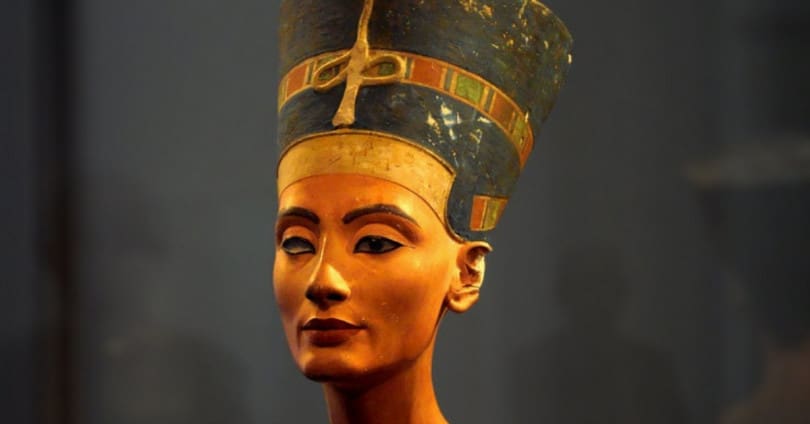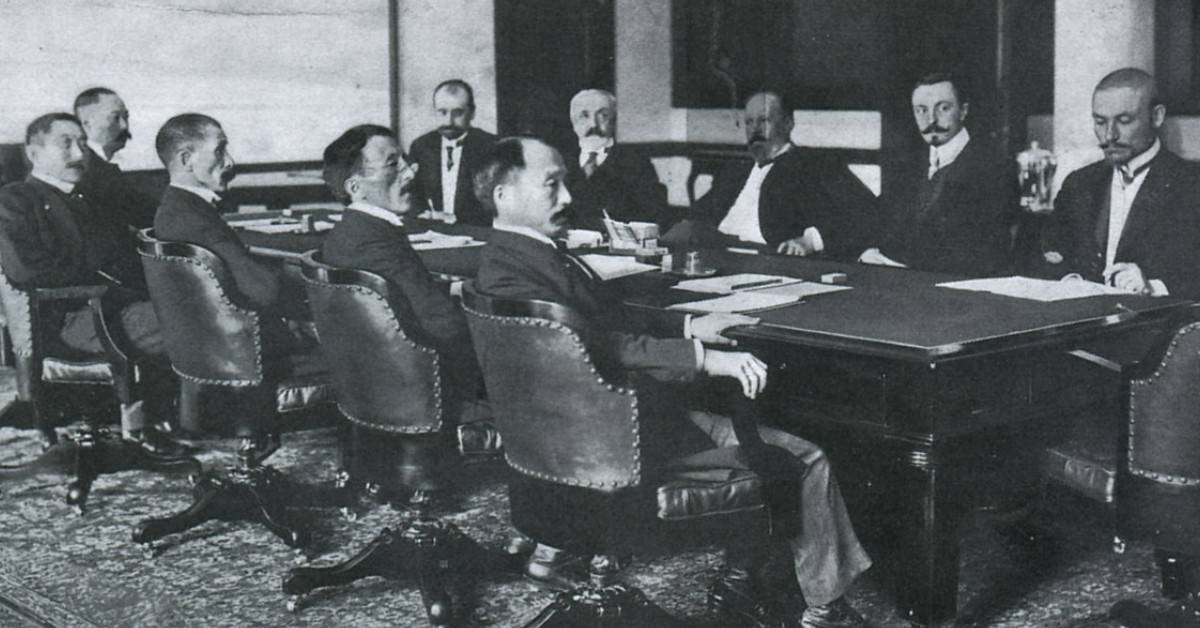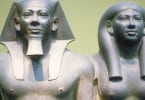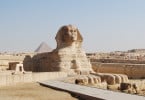Who Was Nefertiti?
Nefertiti was the main wife of the ancient Egyptian pharaoh of the XVIII dynasty Akhenaten, whose reign was marked by a large-scale religious reform.
To date, not a single clear evidence of the origin of Nefertiti has been found. In modern Egyptology, there are two main versions of her origin: the first considers Nefertiti to be an Egyptian, and the second – a foreign princess.
Supporters of foreign origin Nefertiti have two versions. It is believed that Nefertiti was a Mitannian princess sent to the court of father Akhenaten – Pharaoh Amenhotep III. The then king Mitanni Tushratta had 2 daughters: Giluhep and Taduhep, who were sent to the court of the pharaoh.
Giluhepa arrived in Egypt during the life of Amenhotep III and was given in marriage to him. The version that Giluhepa could have been Nefertiti is currently refuted by the evidence of her age.
Taduhepa’s younger sister arrived at the beginning of the reign of Amenhotep IV (Akhenaten). In defense of their hypothesis, scientists cite the meaning of the name Nefertiti “The Beautiful One Has Come”, which clearly indicates a foreign origin. It is believed that Princess Taduhepa, having arrived in Egypt, adopted a new name, as all foreign brides did.
The version of Egyptian origin was originally built on a simple logical chain. If Nefertiti is the main wife of the pharaoh, then she must be an Egyptian, moreover, an Egyptian of royal blood. Therefore, it was initially believed that the queen was one of the daughters of Amenhotep III, but not one of the lists of daughters of this pharaoh contains any mention of a princess with that name. Among his 6 daughters, there is no sister of Nefertiti – Princess Mut-Nojemet (Benre-Mut).
Perhaps Nefertiti is the daughter of the nobleman Eye, one of the associates of Akhenaten, later a pharaoh, and probably the cousin of Akhenaten. Legends say that never before had Egypt generated such a beauty.
The love of the royal couple became one of the main subjects for the artists of Ahetaton – the capital of Akhenaten and Nefertiti. Never before in Egyptian art have worked so vividly demonstrated the feelings of royal spouses.
Marriage and Family
Nefertiti was celebrated for her beauty, especially her statuesque figure and symmetrical facial features, so it should not come as a surprise that she caught her attention and eventually married the King of Egypt. At the time of her marriage to King Akhenaten, she is thought to have been a child, but the exact date of their marriage and their subsequent ascension to the royal throne of Egypt are still uncertain. She was her husband’s great love and she produced six daughters in the marriage.
Nefertiti’s Children
From Akhenaten, Nefertiti gave birth to six daughters: Meritaton – in the 15th year of her father’s reign she was married to her father’s stepbrother Smenhkar, Maketaton – she died in childhood, Ankhesenpaaton – later became the wife of her stepbrother Tutankhamun, Neferneferuaton-tasherit and Setepenra. The absence of the queen’s son – heir to the royal throne, could affect the deterioration of relations within the royal family.
Nefertiti was not only a queen, she was revered as a goddess. The most famous and possibly the most beautiful of the wives of the Egyptian pharaohs lived with their crowned spouse in a huge magnificent palace on the east bank of the Nile.
Possessing tremendous power and authority, the queen was most often depicted in her favorite headdress: a high blue wig, entwined with gold ribbons and a uraeus, which symbolically emphasized her connection with the formidable goddesses, daughters of the Sun.
The End of Queen Nefertiti’s Reign
In the 12th year of Akhenaten’s reign, the middle daughter of the royal couple, Princess Macketaton, died, and soon Nefertiti herself disappeared from the historical arena, possibly falling into disgrace. Her place was taken by the secondary queen from the women’s house AkhenatenKiya (mother of Pharaoh Tutunhamun), and later – the eldest daughter Nefertiti Meritaton.
By the 14th year of Akhenaten’s reign, all references to the queen disappeared. One of the statues found in the workshop of the sculptor Thutmose showed Nefertiti in her declining years. She had the same face, still beautiful, but time had already left its imprint on it, leaving traces of fatigue for years, fatigue, even bruised.
The running queen was dressed in a tight-fitting dress, with sandals on her legs. Having lost the freshness of youth, the figure no longer belonged to the dazzling beauty, but to the mother of six daughters, who saw and experienced a lot in her life.
Bust of Queen Nefertiti
In 1912, a unique bust of Queen Nefertiti was discovered by the German archaeologist Ludwig Borchardt in the workshop of the sculptor Thutmose in El Amarna, which has since become one of the symbols of the beauty and sophistication of ancient Egyptian culture. In his archaeological diary, opposite the sketch of the monument, Borchardt wrote just one phrase: “Describe aimlessly – you have to look.” A unique bust of the queen is kept in the collection of the Egyptian Museum in Berlin.
Bust of Nefertiti – a bust of the famous queen, Akhenaten’s main wife, found in El Amarna on the site of the ruins of the ancient Egyptian capital Ahetaton, built in the middle of the 14th century BC by decree of Amenhotep IV (Akhenaten). Nefertiti was unusually graceful and beautiful, was considered the standard of Egyptian beauty.









